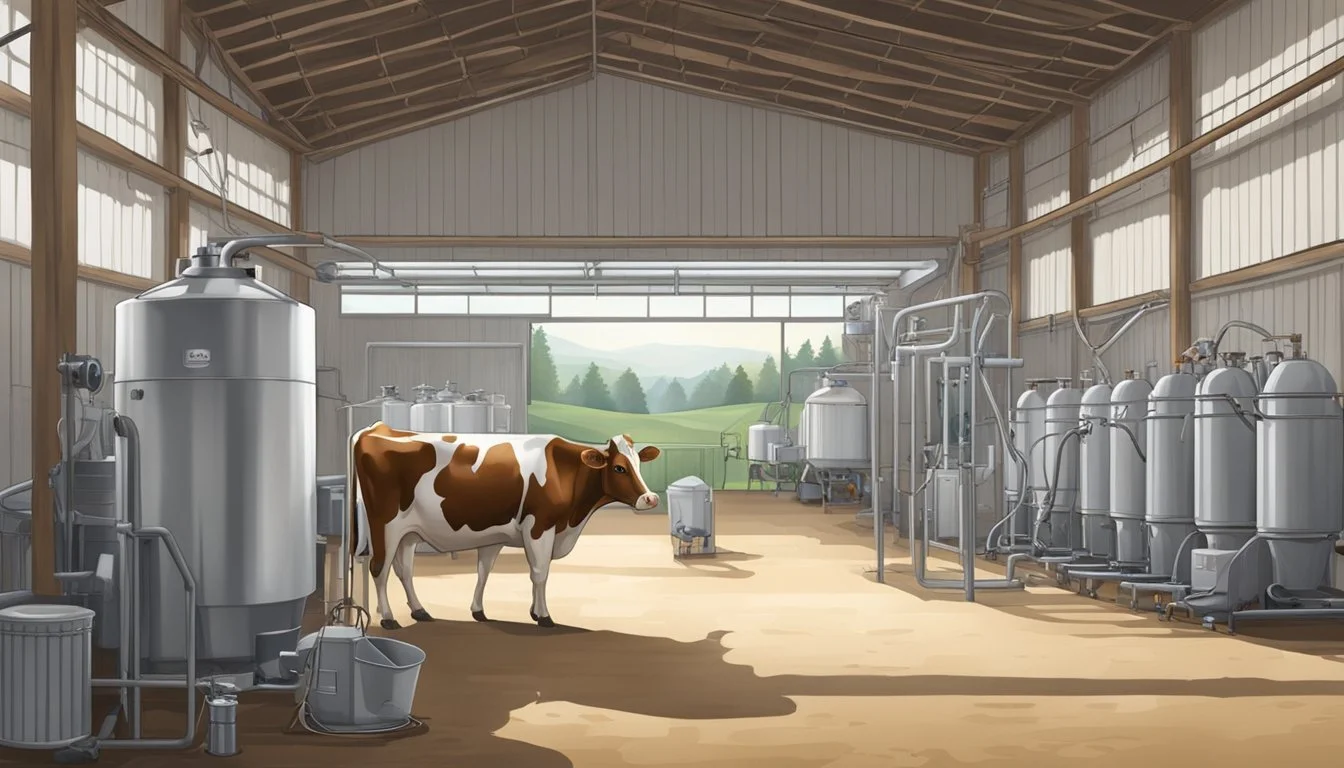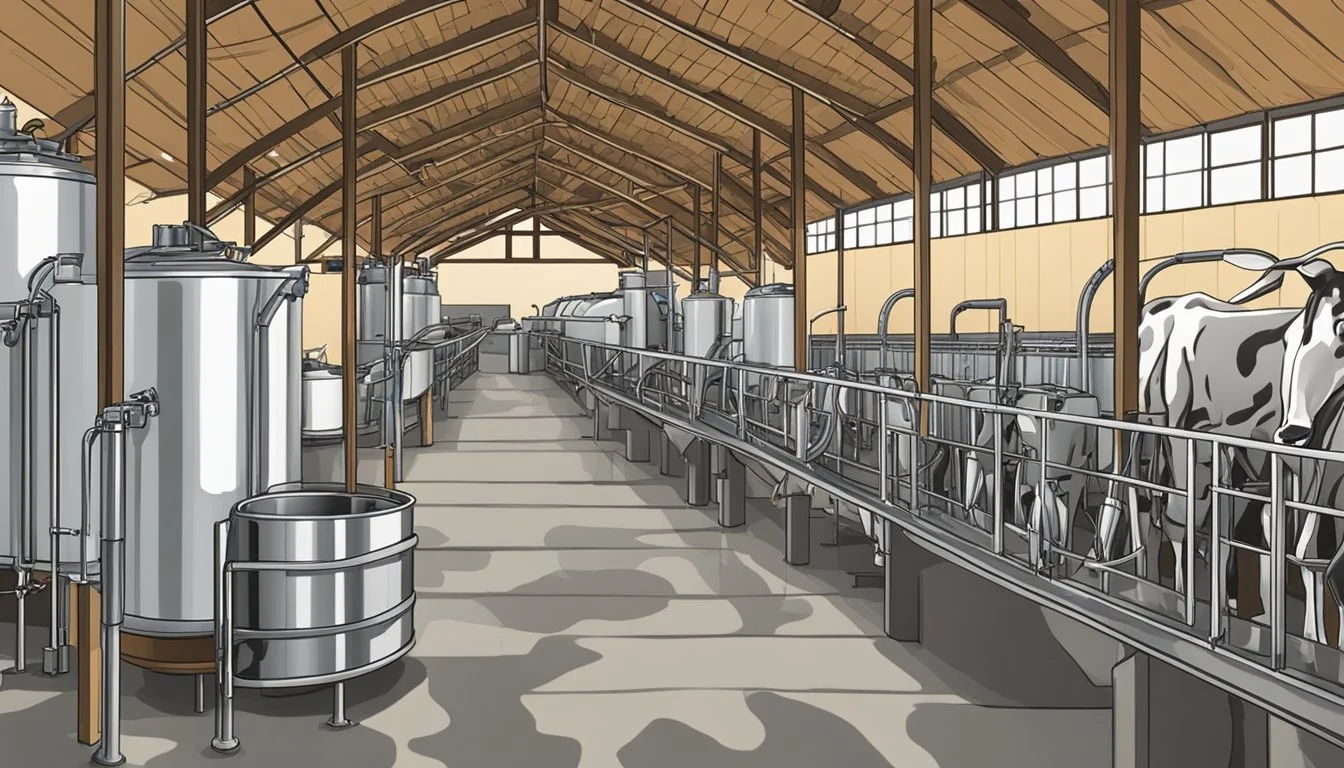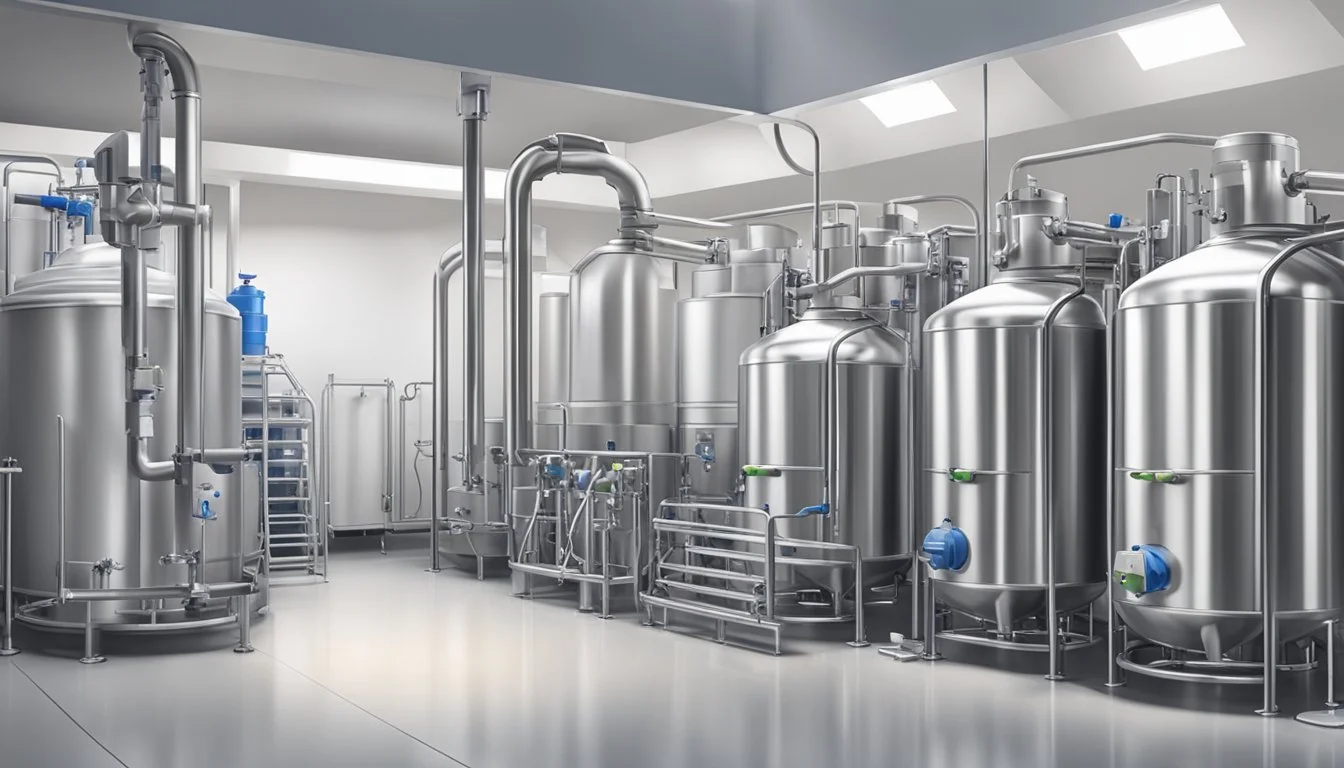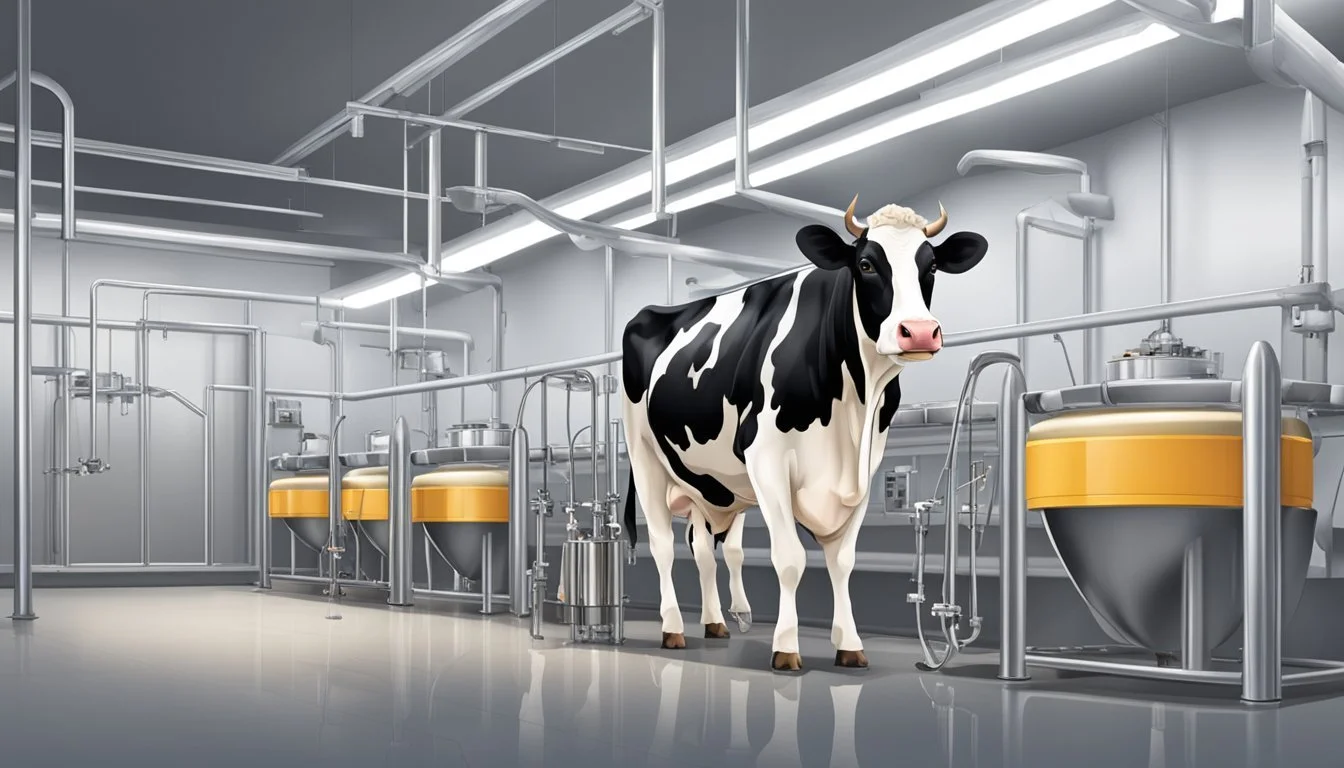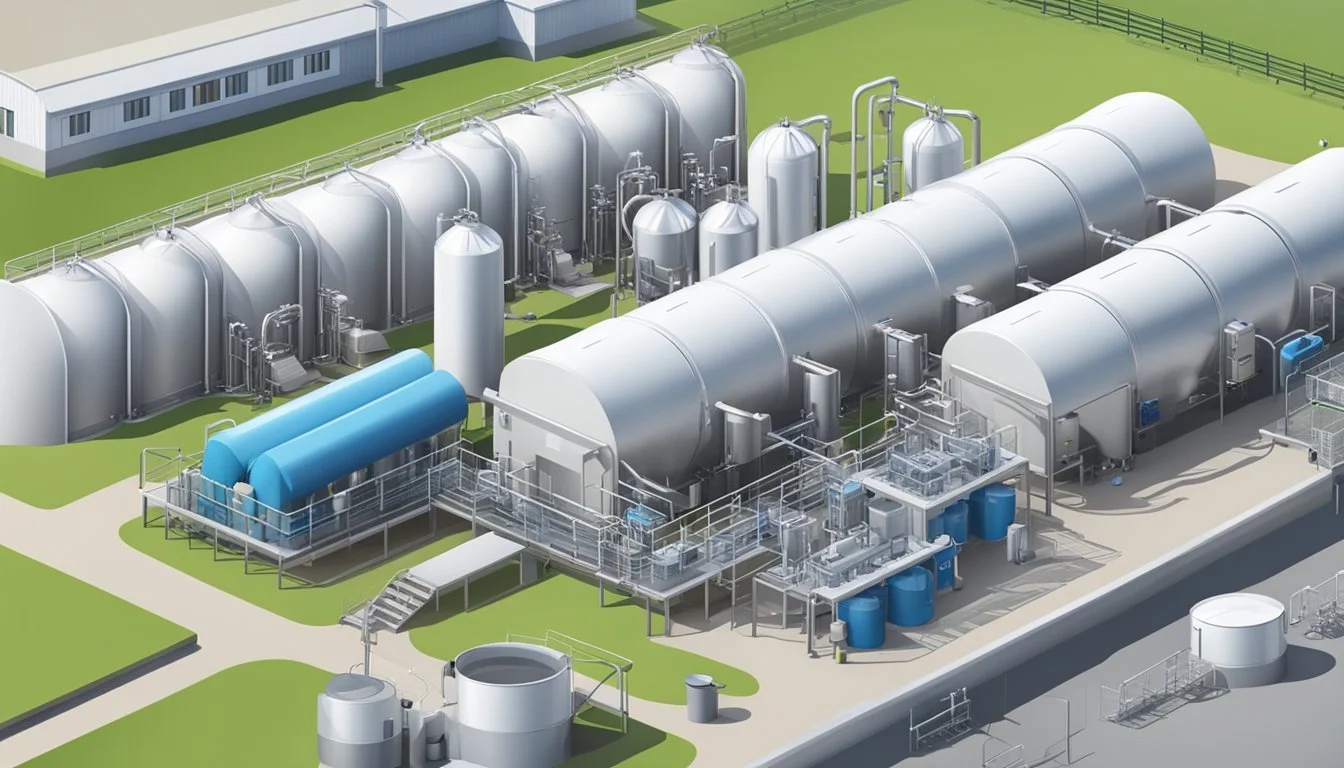What Kind of Milking Equipment Do I Need?
Essential Tools for Efficient Dairy Operations
Selecting the right milking equipment is essential for efficient and safe dairy production. Dairy farmers require reliable tools to ensure they can collect milk cleanly and quickly while maintaining animal welfare. For those managing dairy goats, the needs are slightly different but just as important as for cow dairies. Quality equipment can also have a significant impact on milk quality and the overall productivity of dairy operations.
Common milking equipment includes milking machines, which can be automatically or manually operated, milking pails, and storage containers. A milking machine for dairy goats should be designed to suit their smaller size and gentler nature. Additionally, proper cleaning and maintenance of milking equipment are crucial to prevent the introduction of bacteria into the milk, which can affect both the milk's taste and safety.
When it comes to dairy farming, both cow and goat operations benefit from the use of stainless steel milking pails due to their durability and ease of sanitization. Containers for storing and processing milk must also adhere to standards that ensure milk stays at the appropriate temperature to maintain its freshness until further processing. Whether for a large dairy farm or a small homestead, the right milking equipment is foundational for successful dairy management.
Understanding Milking Equipment Basics
Before diving into the world of milking equipment, it's essential to understand the different types that are available, the importance of using stainless steel, the need for stringent hygiene practices, and how to assess what's necessary for specific dairy operations.
Types of Milking Equipment
Milking equipment varies from simple hand-operated devices to sophisticated automated systems. The primary pieces of milking equipment include milking machines, which consist of a vacuum pump, pulsator, milk tube, cluster, and receivers or buckets. They collectively work to extract milk from goats or cows efficiently. Furthermore, there are various milking stations, such as parallel, herringbone, and rotary parlors, which cater to the layout and size of the herd.
Benefits of Stainless Steel
Using stainless steel in milking equipment is widely recommended. Stainless steel pails and other components are preferred due to their durability and resistance to corrosion. The material's non-porous nature means it doesn't harbor bacteria, leading to cleaner milk and a longer shelf-life for dairy products. Its ease of cleaning is a significant advantage in maintaining milk quality.
Equipment Hygiene and Sanitization
Hygiene and sanitization are paramount in the milking process. Every piece of equipment that comes in contact with the milk should be thoroughly sanitized to prevent contamination. This includes using proper udder wash solutions before milking and teat dip post-milking to ensure that the milk is safe for consumption and that the animals remain healthy. Proper cleaning protocols include rinsing, washing with a suitable detergent, acid rinsing to prevent mineral build-up, and sanitizing.
Assessing Your Needs
When selecting milking equipment, dairy farmers must consider the herd size, milking frequency, and available labor. Small-scale operations may opt for simple machines or even hand milking, while larger dairies benefit from fully automated systems. It's crucial to strike a balance between the initial investment and the long-term benefits of increased efficiency and milk yield.
Milking Machines
Milking machines offer a more efficient alternative to hand milking, streamlining the process and potentially reducing the physical strain on farmers. They come in various models suitable for different herd sizes and dairy operation needs.
Selecting a Milking Machine
When selecting a milking machine, one must consider herd size and the scale of operations. For small herds, a simple portable milking unit may suffice, whereas larger herds could benefit from more sophisticated pipeline systems. It is essential to choose equipment that can be easily integrated into the existing farm setup. For instance, while a milking machine can be a significant investment, it's important to select a model that matches the demand and can enhance productivity without incurring unnecessary costs.
Operating Milking Machines
Operating milking machines requires an understanding of the assembly and function of each component. Staff must be trained to properly attach the machine to the animals, ensuring comfort and efficiency. It is critical to follow the manufacturer’s guidelines and to operate machines at the correct vacuum pressure to safeguard the animals' health and milk quality.
Maintenance and Cleaning
For maintenance and cleaning, a systematic approach is vital. Routine examinations for any signs of wear and tear ensure the long-term operation of the machines. Post-milking, components should be sanitized rigorously to eliminate bacteria, prevent milk contamination, and maintain animal health. Some systems might need specialized cleaning solutions while others will require only water and standard cleaning agents. Proper maintenance and regular cleansing are instrumental in preserving both machinery and milk integrity, which may include procedures for how to effectively pasteurize the milk if the system incorporates this function.
Manual Milking Supplies
When embarking on milking by hand, one will need a set of specific supplies that ensure efficiency and cleanliness. Utilizing the right equipment is crucial for obtaining the best quality milk and for the health of the dairy animals.
Milking By Hand Essentials
For milking by hand, a person requires a few key items:
Milking Stool: A stable seat that keeps them comfortable and at the right height during the process.
Teat Dip: An antiseptic solution for cleaning teats before and after milking to prevent mastitis.
Udder Wipes or Cloth: To clean the udder thoroughly before beginning the milking process, reducing bacterial contamination.
Strip Cup: A tool used to check for mastitis or abnormalities in the milk before fully milking the animal.
Choosing the right milking supplies reduces the risk of contamination and ensures the well-being of both the dairy goats and the milk they provide.
Choosing Buckets and Storage
The selection of buckets and storage containers is integral to the manual milking process:
Milk Bucket: A stainless steel milk pail is a fundamental requirement for milking. Stainless steel is preferred over plastic for its durability and ease of sanitization.
Storage Containers: After milking, it's essential to have proper storage containers. Glass jars are recommended; they preserve freshness better and are easier to clean thoroughly.
Choosing the correct buckets and storage containers is crucial for maintaining milk integrity from milking to consumer.
Milk Storage and Handling
When it comes to storing and handling milk, maintaining its quality and selecting the appropriate containers are paramount. Careful temperature management and the use of proper materials are critical in preserving the integrity of the milk from the moment it leaves the animal to when it’s ready for consumption or processing.
Preserving Quality Milk
To ensure quality milk remains safe and retains its freshness, immediate cooling to the appropriate storage temperature is essential. Ideally, milk should be stored in a refrigerator at temperatures between 36-38°F (2-3°C). Rapid cooling minimizes bacterial growth, which in turn helps maintain the milk's natural taste and nutritional value. Regularly monitoring the temperature with a good quality thermometer should be part of the standard operating procedure.
Appropriate Containers and Jars
The selection of containers and jars for milk storage is critical to maintain its quality. Glass jars are widely favored for their non-porous nature and ease of sanitization. However, for larger volumes, stainless steel containers are often used due to their durability and resistance to corrosion. They are also able to withstand the rigors of frequent cleaning. When choosing canning jars, one needs to ensure they have airtight seals, which helps prevent contamination and further preserve milk quality. All containers must be impeccably cleaned and sterilized before use to ensure the milk remains uncontaminated.
Milking Parlor Design
Designing a milking parlor requires careful consideration to maximize efficiency and cow comfort. Decisions made in the layout, equipment, and overall flow will have long-term impacts on the operation of your dairy farm.
Layout Considerations
The layout of a milking parlor is crucial for streamlining the milking process and ensuring animal welfare. One must decide between different configurations such as tandem, herringbone, and parallel arrangements, each with their specific benefits for various herd sizes. For instance, tandem parlors work well for dairies that prioritize individual cow attention, while herringbone and parallel setups accelerate the milking process for larger herds. Consideration of the milking center design is essential during planning for efficient operation.
Including a Milk Stand
A milk stand is an essential piece of equipment that can boost efficiency by keeping animals steady during the milking process. Its inclusion is a must, and it can range from simple, manual stands to advanced, automated ones that accommodate the milking machinery. To support various parlor styles, platforms like GEA DairyParlor offer different milking stand configurations, ensuring there's an option that fits every dairy's specific needs.
Facilities and Flow
The facilities surrounding the milking parlor should facilitate a smooth flow of cows into and out of the milking area. Ventilation, cow traffic, and operator space all play a part in an effective milking parlor design. Proper planning should result in reduced wait times for cows and efficient milk harvesting. Issues of ventilation and parlor positioning are also paramount to consider for maintaining cow health and milk quality, as discussed by Farm Compare.
Milking Procedures and Techniques
When discussing milking procedures and techniques, it's important to focus on established routines, early identification of udder issues, and the adoption of effective methods. This ensures optimal milk production and maintains the health of the dairy animals.
Milking Routines
Proper milking routines are the cornerstone of a successful dairy operation. They ensure that milk is extracted efficiently and safely. A typical routine includes cleaning and drying the teats before milking to prevent contamination, followed by consistent milking times which help maintain the animal’s comfort and stable milk production. Effective routines often involve stimulating the teats before attaching the milking machine, as this leads to better colostrum release and overall milk let-down.
Identifying Udder Issues
Early detection of udder issues such as mastitis is crucial. It can be achieved through regular inspection and palpation of the udder for signs of inflammation or abnormality. If mastitis is suspected, the milk from the affected quarter should be tested and not pooled with the general supply to avoid contamination. A regular checkup schedule aids in identifying and treating these issues promptly, thereby safeguarding the animal’s well-being and milk quality.
Effective Milking Methods
Adopting effective milking methods is not only vital for milk production but also for the health of the dairy herd. It involves setting the milking equipment to the correct vacuum level and pulsation rate to mimic the natural milking process. Ensure that each animal is milked completely without over-milking, which can lead to teat damage. Post-milking, applying teat disinfectants helps prevent infections. The proper use and maintenance of milking equipment contribute to the overall efficiency and success of the milking process.
Animal Comfort and Health
Ensuring the health and comfort of dairy animals is essential in milking operations, not only to meet the welfare standards but also to maximize milk production. Proper equipment and care can prevent diseases, improve milk quality, and enhance the overall productivity of dairy farming.
Preventing Mastitis
Mastitis, an inflammation of the cow's mammary gland, is primarily caused by bacterial infection. To prevent this condition, farmers should ensure milking routines do not injure the animals or introduce contaminants into milk. Clean, well-sanitized equipment is crucial; the teat cups, hoses, and other components should be devoid of cracks where bacteria can thrive. After milking, applying udder balm can help maintain teat skin health, preventing cracks and dryness that can lead to infections.
Feeding for Optimal Milk Yield
Dairy cows need a balanced diet to produce high-quality milk sustainably. A combination of grains and hay offers energy and fiber, essential for maintaining a healthy digestive system and milk production. Grain feeds are often fortified with minerals and vitamins to support the cow's health, while high-quality hay provides necessary roughage.
Grain: Energy-rich and often enhanced with vitamins and minerals
Hay: Supplies fiber and supports rumen health for better nutrient absorption
Hoof and Leg Care
The condition of a cow's hooves and legs is vital for its comfort and mobility. Regular hoof trimming and maintaining proper flooring in barns are important to avoid lameness, which can greatly impact milk yield and the animal's well-being. In addition, using appropriate milking equipment that minimizes the time cows spend standing on hard surfaces can further prevent hoof and leg issues.
Legal Considerations and Regulations
When setting up milking operations, compliance with regulations and understanding the legal landscape are paramount. This ensures the safety of consumers and helps maintain the integrity of dairy products in the market.
Understanding Dairy Regulations
Dairy farmers must adhere to federal and state dairy regulations that govern various aspects of production, including the equipment used. These regulations cover the sanitary conditions under which milk must be produced and the specifics of the milking process. Regulations are typically enforced by agencies like the Food and Drug Administration (FDA) and can vary by state. They often require that milking equipment be well sanitized and operating correctly to prevent contamination and safeguard milk quality.
Raw Milk Handling Laws
Specific laws that pertain to raw milk, which is milk that has not been pasteurized, are especially strict due to the higher risk of containing harmful bacteria. Many states have laws that prohibit the sale of raw milk altogether, while others allow it with stringent requirements. For instance, equipment used in the processing of raw milk must be capable of being thoroughly cleaned and must be sanitized before each use. The pasteurization process, when required, must meet certain temperature and time conditions to effectively eliminate pathogens. It's critical for producers to stay current with the laws in their state regarding raw milk to ensure they operate within legal parameters.
Goat Breeds and Milking
Before embarking on goat milking, one must consider the appropriate dairy goat breeds and understand their breeding and lactation cycles as these factors significantly influence milk production.
Selecting Dairy Goat Breeds
When selecting a dairy goat breed for milking, one must take into account the breed's milk yield and composition. For example, the Saanen is known for producing a high volume of milk, often ranging from 1.5 to 3 gallons per day during their lactation period. It's the go-to breed when seeking quantity combined with lower fat content in the milk. On the other hand, breeds like the Nubian excel in butterfat content, giving their milk a rich and creamy consistency, ideal for cheese-making. Other breeds to consider include the Alpine and Toggenburg, both valued for their hardiness and consistent milk production; the Oberhasli with a sweet taste to its milk; and the Nigerian Dwarf, which, despite its small stature, produces milk with high butterfat content. The Sable, a color variant of the Saanen, also shares the high milk production traits of its counterpart.
Breeding and Lactation Cycles
Dairy animals such as goats require appropriate breeding management to ensure a steady milk supply. Goats have a distinct breeding cycle, which usually begins in the fall. The lactating period follows the birth of their offspring and can last for approximately 10 months. It is essential to plan the breeding carefully, as the frequency and timing of breeding directly impact milk production throughout the year. Most dairy goats, including breeds like the Nubian, Alpine, Oberhasli, Nigerian Dwarf, Saanen, and Toggenburg, need to be mated and subsequently give birth (kidding) to begin lactation, with a standard gestation period of about 150 days. A well-managed breeding program ensures that the cycles of milk production remain consistent, allowing for sustainable dairy operations.
Starting Your Milking Operation
When initiating a milking operation, it’s essential to thoroughly plan and adhere to a strict budget. This process is critical whether one is involved in homesteading or intends to embark on a larger scale dairy venture.
Planning and Budgeting
Before purchasing any milking equipment, one must conduct comprehensive research to determine the needs specific to their operation. Depending on the scale, this could range from simple hand-operated devices to more complex automated systems. For homesteading, a manual separator or a hand crank, which typically costs about $300, might suffice. Those needing more efficient setups may consider electric cream separators, which can handle 2-1/2 gallons at a time and process roughly 21 gallons per hour, for approximately $350.
Formulating a detailed budget is also crucial. The budget should account for initial equipment costs, ongoing maintenance, supplies, and potential upgrades as the operation grows. Estimating operational costs upfront helps one to avoid unexpected expenses that could impede the success of their milking operation. For instance, regular sanitization and proper operation of milking equipment are imperative to ensure milk quality and the health of the herd.

